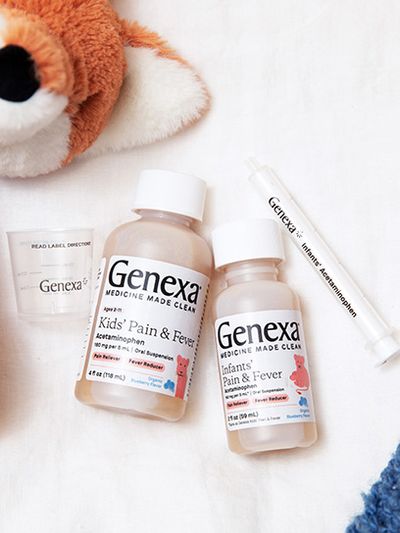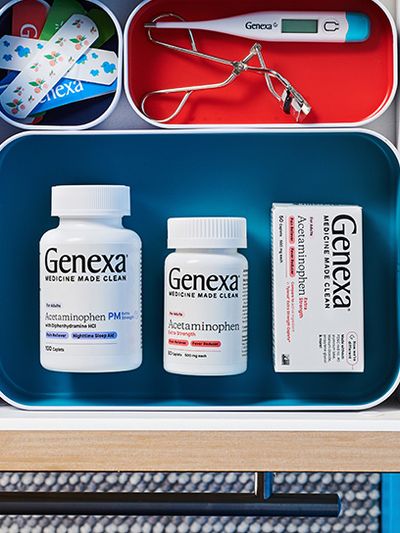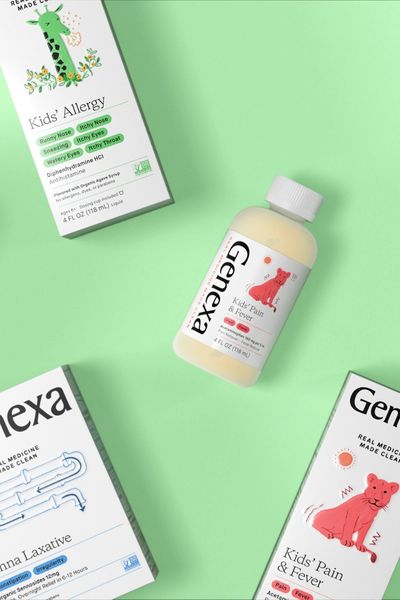What Is The Best Kids' Nasal Spray?
How To Shop For Nasal Spray For Your Child
Table of contents:
If your child has severe allergies or even a stuffy nose, they might benefit from a nasal spray. However, as with all medications, you want to make sure you are using the best nasal spray to safely and effectively treat your child’s symptoms.
This article will give you an overview of nasal spray and an in-depth understanding of the different types so that you can choose the best nasal spray for your child.
What Is Nasal Spray?
Before looking specifically at nasal sprays for kids, it is important to understand what nasal sprays are and why they are beneficial. A nasal spray is any solution or suspension of medicines that are administered into the nostrils through a spray bottle, nasal bulb, or other apparatus.
Nasal sprays can be used to treat many different medical conditions. They are sold both over the counter and as prescription drugs. If your doctor prescribes your child a nasal spray, it may contain steroids, antihistamines, mast cell inhibitors, or other beneficial compounds.
What Is Nasal Congestion?
Nasal sprays are used on children with congestion to clear up their nasal passages and provide them relief from sinus pressure or nasal congestion. Generally speaking, nasal congestion is a condition wherein it becomes difficult to breathe due to blocked nasal passages.
Nasal congestion is caused by inflammation or irritation in the nasal passages. Bacterial infections, viral infections, and allergies can trigger inflammation and lead to nasal congestion. When the inside of the nose becomes inflamed, the blood vessels in the nose swell. This swelling reduces the amount of space there is for air to enter the nose, which can make it hard to breathe.
Nasal congestion is often a symptom of conditions that include:
- Viral or bacterial infections
- Common cold and flu
- Allergies
- Sinus infections
- Rhinitis
- Pollution
- Chemical irritants, such as tobacco smoke
- Certain medications, such as sedatives or beta-blockers
- Deviated nasal septum
- Medical conditions, such as nasal tumors, nasal cysts, and nasal polyps
Types of Nasal Spray
The term “nasal spray” refers to an entire group of medications that can be administered directly into the nasal passages. This section will look at the most common types of nasal sprays including antihistamine nasal spray, nasal steroid sprays, anticholinergics, mast cell stabilizers, and saline sprays.
Antihistamine Nasal Spray
If your child suffers from seasonal or environmental allergies, they might benefit from an antihistamine nasal spray. Antihistamines are medications that block histamines from performing their intended action in your body. Histamines are chemicals released by the body when you come into contact with an allergen, such as dust, pollen, or animal dander. Histamines are responsible for the symptoms of an allergy attack including:
- Runny or stuffy nose
- Itchy eyes and throat
- Watery eyes
- Sneezing
- Cough from postnasal drip
- Hives or rash
Antihistamine nasal sprays are available by prescription from your child’s doctor. They usually take effect within an hour of administration. That being said, they will be most effective at reducing your child’s allergies if you use them routinely. The active ingredient in antihistamine sprays is usually azelastine or olopatadine.
If you think an antihistamine nasal spray would benefit your child, you should talk to your doctor about using one. If your doctor approves, make sure to look for antihistamine nasal sprays that are made specifically for children.
Nasal Steroid Spray
Another type of allergy treatment available in the form of a nasal spray is nasal steroids. This type of medication works by decreasing inflammation in the nasal passages, which makes it easier to breathe and expel mucus. These sprays can prevent sneezing and a runny, stuffy, or itchy nose.
Nasal steroid sprays are often available over the counter, but, in some cases, can also be prescribed. That being said, it is best to only use them when recommended by a doctor. Make sure that, if you use a nasal steroid spray on your child, you are not using it beyond the recommended treatment period. Unlike antihistamine nasal sprays, nasal steroid sprays take several hours to start working and usually need to be used for several days before they reach maximal effect.
Oftentimes, nasal steroid sprays are recommended by doctors for kids with allergies such as hay fever or long-standing rhinitis. Nasal steroid sprays may contain any of the following active ingredients:
- Flunisolide
- Fluticasone propionate
- Ciclesonide
- Budesonide
- Beclomethasone dipropionate
Anticholinergics
This type of nasal spray is used to treat runny noses in children who have both allergic and non-allergic rhinitis. Although anticholinergics can reduce nasal discharge, they might leave a bad taste in your child’s mouth and cause dry mouth. The active ingredient in this type of nasal spray is often ipratropium bromide.
Mast Cell Stabilizers
If you are reluctant to use steroids on your child, you might want to consider using mast cell stabilizers. These sprays rely on the active ingredient cromolyn sodium to stop immune cells, also known as mast cells, from releasing histamines into your child’s bloodstream. The downside to this type of nasal spray is that it needs to be administered four times a day to reach its maximum effectiveness.
Saline Sprays
Saline sprays are made from a mixture of salt and water. They can be used to help soften mucus and reduce congestion caused by any type of illness or allergy. If you want to use them in conjunction with a medication nasal spray, make sure to wait several minutes after administering the medicated spray to administer the saline so that the medication is not rinsed out of your child’s nose.
Are Nasal Sprays Safe For Kids?
Given that doctors usually advise against using over-the-counter cough and cold medicines for children, nasal drops and sprays are usually recommended as alternative forms of treatment.
The safest type of nasal spray available for children is saline nasal drops or spray because there is no active ingredient in saline sprays.
You can either buy saline nasal spray at a pharmacy or make it at home. Although it is generally considered safe, it is best to talk with your doctor before you use a saline nasal spray, or any type of nasal spray, on your child.
It is not recommended that you use oxymetazoline nasal sprays on your child if they are under the age of six. If your child is over six years old, you should only use this type of nasal spray if it is prescribed by your doctor.
How Should I Administer My Child’s Nasal Spray?
It is likely that your child will be resistant to having spray squirted into their nose because it creates an uncomfortable sensation.
To minimize their discomfort and properly administer the nasal spray, follow these instructions:
- Wash your hands with hot water and soap to remove any bacteria or viruses that could potentially make your child sicker.
- If directed by the instruction label on the spray, shake the bottle well.
- Have your child sit with their head tilted back. If this positioning creates discomfort, have your child lie on the floor with their head tilted back. Sometimes lying on the floor like this can be uncomfortable for your child’s neck. If they look uncomfortable or complain about the position, put a pillow under their neck.
- If you have a young child, you may want to wrap them in a blanket so that their arms and legs stay still in the correct position. You can also ask another adult for help holding your child in the correct position.
- Spray the correct dosage of nasal spray into your child’s nostril, aiming at the outer wall of their nostril. Do the same in the other nostril. If any excess medication drips out of their nose, wipe it away with a tissue.
- Ask your child to remain in that position for a few minutes while the medicine absorbs.
- Sanitize the top of the spray and put it away, out of your child’s reach.
Side Effects of Nasal Spray
Studies have shown that almost half of children who use nasal sprays complain that some of the medication drips down the back of their throats. This dripping can cause irritation. One way to avoid this side effect of nasal sprays is to talk with your child as you are administering the nasal spray to find the best angle from which to administer the medication.
Other common side effects of nasal sprays in children include a bad taste in the mouth, dryness in the nose, headaches, drowsiness, and, in rare cases, nosebleeds. Oftentimes, these side effects arise when the medication is not administered properly.
Conclusion
Most doctors agree the safest nasal spray available for kids is saline nasal spray because it does not contain an active ingredient. That being said, there are other safe nasal sprays available to treat your child’s nasal congestion.
Regardless of the type of nasal spray you want to use on your child, it is best to talk with your doctor before you use the spray to ensure you are using the best type of spray available to treat their symptoms.






